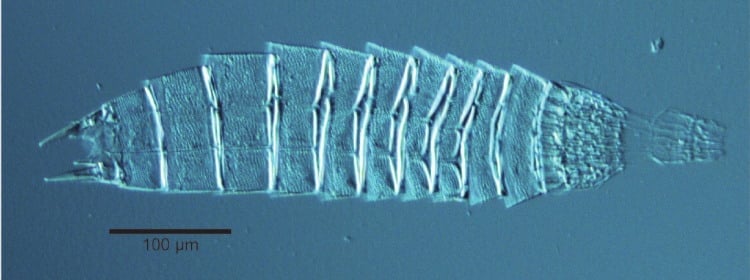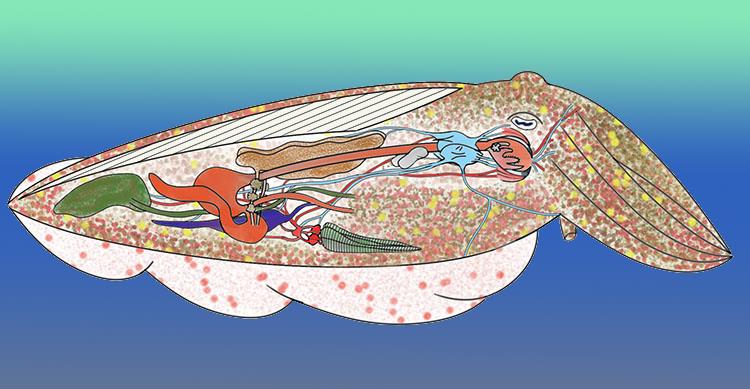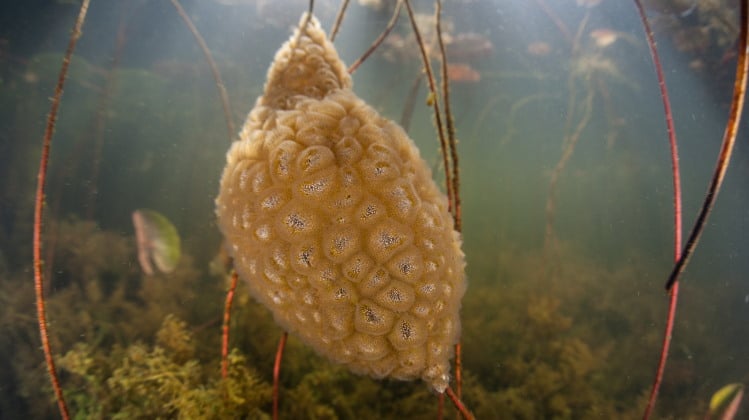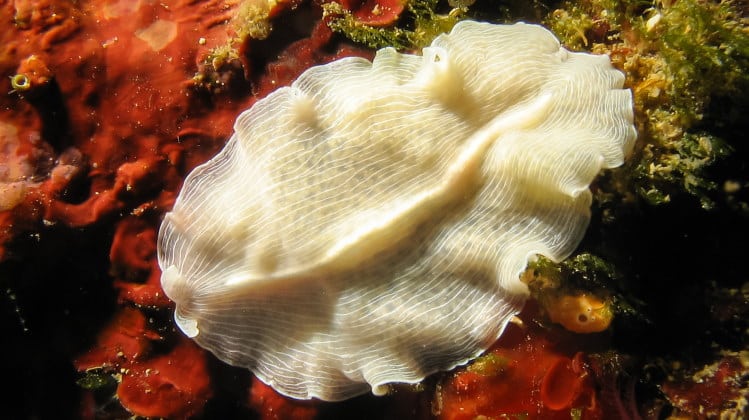Dicyemida: Tiny Marine Parasites of Octopus and Squids
Dicyemida Etymology: From the Greek Di for two and cyem for germ – referring to the existence of both sexual and asexual reproduction in this group.
Dicyemida Species Count:- According to the online database the Catalogue of Life there are 122 living species of Dicyemida
Characteristics of Dicyemida:
- Bilaterally symmetrical.
- Has no organs or tissues.
- The body contains no internal cavity.
- The body possesses no digestive tract (gut).
- Body only has two cell layers in most places.
- Has no nervous system.
- Some cells develop inside other cells.
- Reproduction quite complex involving both sexual and asexual aspects.
- All are endoparasites on other marine invertebrates (Mollusca; Cephalopoda).
Introduction to the Dicyemida
The Dicyemida were once part of the Mesozoa. However modern phylogenomic analyses suggest the Dicyemida and the Orthonectida are two separate phyla. See the discussion on Mesozoa, or Zverkov et. al. May 2019.
The Dicyemida are a small phylum of small (0.5 to 7 millimetres in length) and poorly understood parasitic marine animals. They have very simple bodies, often consisting of less than 50 cells. All known species are internal parasites cephalopods. They are sometimes referred to as the Rhombozoa. The Dicyemida have no gaseous exchange organs, no circulatory system, no nervous system and no digestive system.
The Dicyemida are all parasites of cephalopods (Octopus and Squid), they live in the animal’s renal system, their kidneys. As far as is known to date each most species of dicyemid are is specific to a single species of cephalopod and each species of cephalopod only hosts a single species of dicyemida. One of the species to break this rule is the Red Octopus or Mexican Four-eyed Octopus (Octopus maya) which host two species of Dicyemid, namely Dicyema hochbergi and Dicyema mexcayae.
While Dicyemids occur in all known marine waters, coastal to hadal and polar to tropical, and therefore infect cephalopods in all these habitats, the infection rate varies considerably from the poles to the tropics. For cephalopods in polar environments the infection rates vary from 90% to100%. However, in subtropical waters the rate is only around 15% on average and it drops to 10% in tropical waters. Why this should be so is not yet understood.
Ecology and Biology of the Dicyemida
The Dicyemida have a more complicated life cycle than their cousins the Orthonectida.
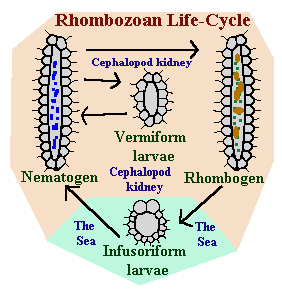
The axial cell contains smaller cells called axoblasts. These axoblasts give rise to either, vermiform (long and thin) asexual larvae called nematogens sexually reproducing individuals called rhombogens.
The two forms are physically identical as far as we know. The only difference being that in the nematogen stage, the axoblasts produce more nematogens and in the rhombogen stage they produce infusorigens which serve as the animal’s gonads (organs which produce eggs and sperm).
The eggs are fertilised inside the axial cell where they develop into infusoriform larvae which quickly develop the adult number of cells. Each species has a definite number of cells in its adult form. This infusoriform larvae then leaves the axial cell and the hosts body, with its urine. They then sink to the sea floor where they grow by means of cell enlargement, rather than by cell addition. It is not currently know how these larvae re-enter their hosts and become nematogens.
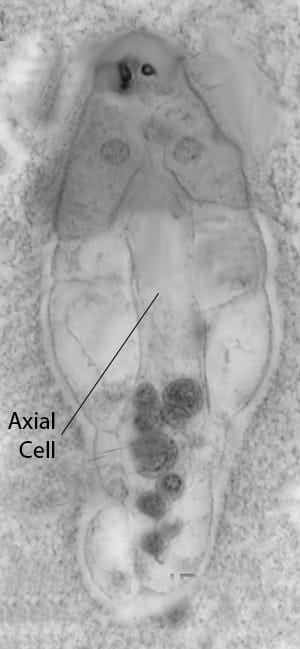
Taxonomy
The phylum Dicyemida contains only a single class, Rhombozoa and no orders. As of May 2021 there are 122 known species, with the last new species being described in 1016. Because, as far as is known, in most cases, each species is unique to its particular cephalopod host, it is anticipated that the total number of species will eventually reflect the total number of cephalopod species. This could result in the final species count for the phylum reaching more than 800.
No complete genome has yet been sequenced for the Dicyemida. However, given that their small cell count, even less than that of their ex-partners the Orthonectida, it is likely that they will have a similarly small and compact genome. Who knows, it may even turn out to the the smallest genome of any multicellular animal.
Phylum Dicyemida; Class Rhombozoa
- Family Conocyemidae • 2 living spp
- Genus Conocyema • 1 living spp
- Genus Microcyema • 1 living spp
- Family Dicyemidae • 119 living spp
- Genus Dicyema • 69 living spp
- Genus Dicyemennea • 42 living spp
- Genus Dicyemodeca • 3 living spp
- Genus Dodecadicyema • 1 living spp
- Genus Pleodicyema • 1 living spp
- Genus Pseudicyema • 3 living spp
- Family Kantharellidae • 1 living spp
- Genus Kantharella • 1 living spp
Offline References
G. Giribet & G. Edgecombe; The Invertebrate Tree of Life Princeton University Press (2020)
Image Credits:- Cover image (Dicyema japonicum) by Hidedaka Furuya – License CC BY-SA 4.0


